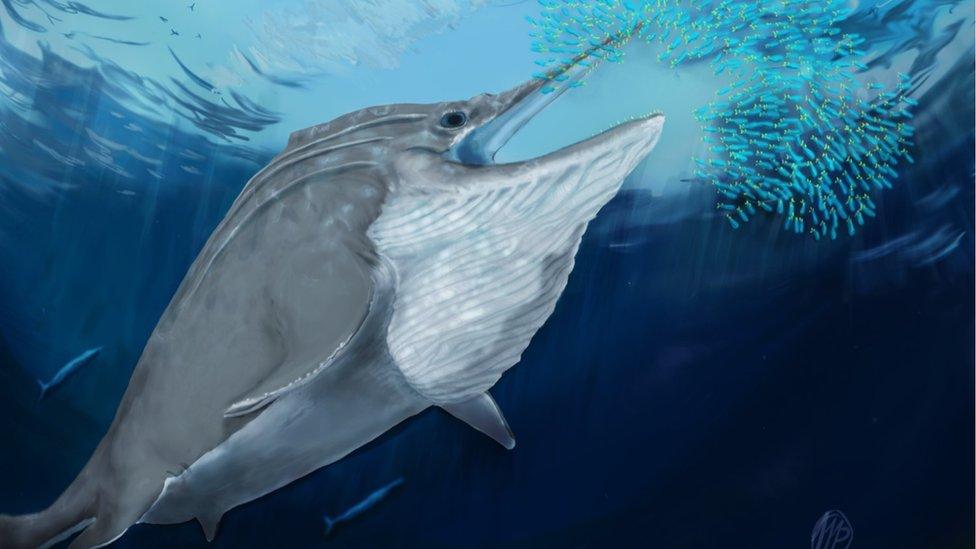Ichthyosaur: Scientists discover huge ancient marine reptile tooth in Alps
- Published
- comments

An artist's impression of what the ichthyosaur might have looked like
Scientists have discovered sets of fossils representing three new ichthyosaurs that may have been among the largest animals to have ever lived!
Among their finds is a tooth so huge that scientists think the marine reptiles may have been even larger than we previously thought.
The fossils were all discovered in the Alps mountain range in Switzerland.
The Ichthyosaurs - which means 'fish lizard' in Greek - are believed to have lived about 205 million years ago during the late Triassic period.
What did scientists find?
Check out the size of the huge Ichthyosaur tooth!
The fossils were discovered over different sites high up in the Swiss Alps over a 25 year period, however they have only recently been examined in detail.
Fossil remains of ichthyosaurs aren't that commonly found so this discovery was particularly exciting for scientists.
Experts at the University of Bonn in Germany examined a range of fossils including ten rib fragments and a vertebra, which suggest the ichthyosaur could have been around 20 meters long - making them among the largest animals to have ever lived!
Certain species of ichthyosaur have been found to have had some of the biggest eyes ever recorded - this helped them see through the dark waters of the deep ocean!
They also found a tooth with a 6cm long root.
The find help settle a debate for palaeontologists - as they hadn't been sure whether ichthyosaurs had teeth or not.
Professor Martin Sander who lead the study said: "From our point of view, however, the tooth is particularly exciting."
Ichthyosaurs were previously thought to have only inhabited the deep ocean, but the rocks from which the new fossils came from are believed to have been located at the bottom of a shallow coastal area.
Experts think this could mean that some of the giant ichthyosaurs followed schools of fish there.
Scientists are hopeful that there could be more discoveries yet to come.
"Maybe there are more remains of the giant sea creatures hidden beneath the glaciers," Professor Sander added.
- Published27 September 2021
- Published2 December 2021
- Published12 August 2020
